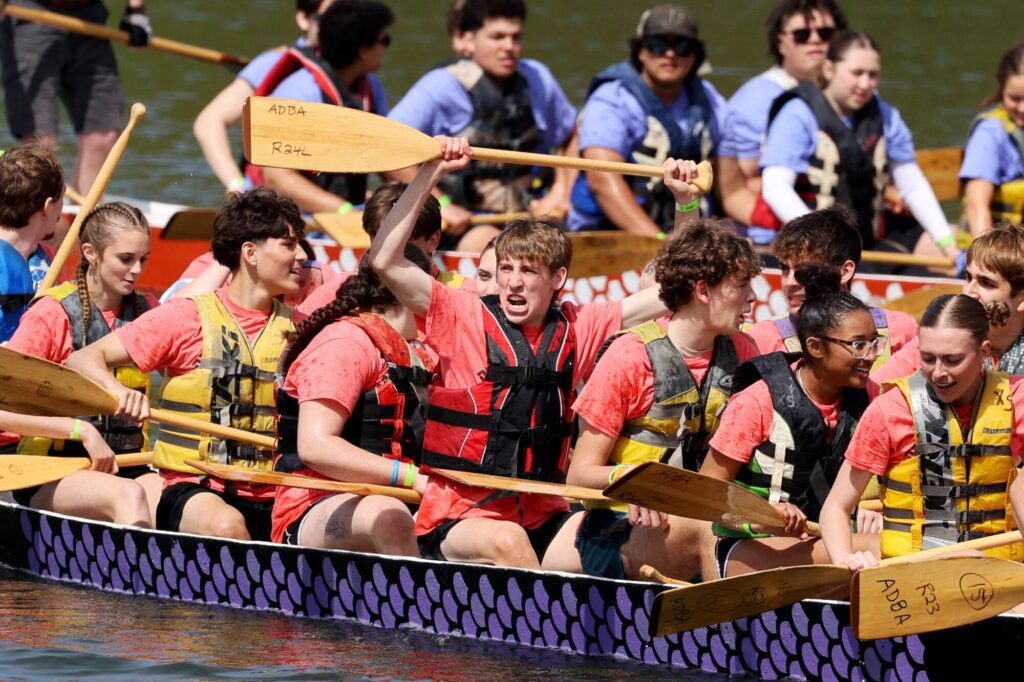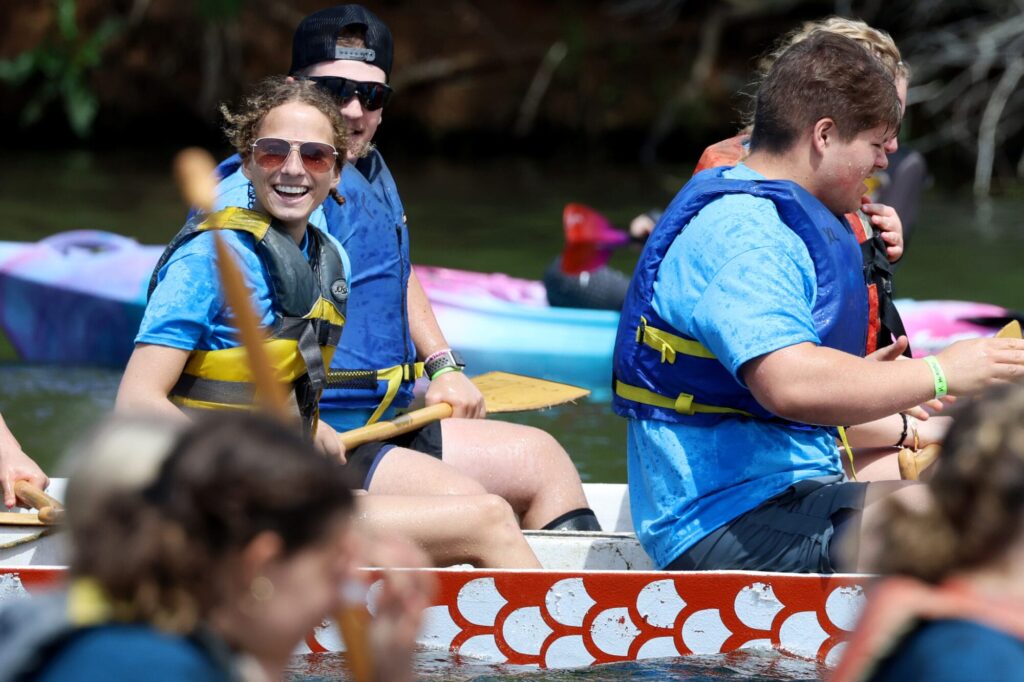By Annika Cook
The usual calm waters of Lake Geode were anything but on the morning of Sunday, May 4, 2025, as the Burlington High School Student Council hosted its 35th annual Dragon Boat Races.
Students and teachers alike from Burlington, West Burlington, and Danville lined the beach waiting for their chance to row the infamous dragon-headed boats and compete for the championship.
Dragon Boats is an annual competition where students and staff from local schools race boats across Lake Geode. The day is a favorite end of year tradition for Burlington High School (BHS) students. Student teams set up tailgate-style campouts on the beach, grilling, playing volleyball and hanging out together while waiting for their team’s turn to race.
Each team is comprised of 30 students. Twenty students race in the boat each round– 18 rowers, one flag catcher, and a drummer to keep time for the team. Teams are led by two team captains who volunteer themselves to organize their peers.

The job of the captain is no small role and a chance for students to practice their leadership skills. Captains organize fundraising for their team, manage sign ups and shirts, and most importantly, develop their teams strategy.
Caris Jolin, a freshman at BHS, served as captain for her team.
“I take charge!” Jolin joked when asked about her role as captain. “I help my team prepare.” Her team, Let it Row, comprised only of BHS freshmen, managed to place 3rd this year– a surprisingly high place for a team of new rowers.
Their strategy?
“We get in sync,” said Jolin. “We get in sync and we row fast, but mainly we stay in sync.”
The Burlington Student Council’s job during the event is also to keep everyone in sync.
“Student council plans months in advance to make sure we have the funding and resources available,” said Ian Steward, a member of the Student Council Executive Board. Preparations include coordinating with the Dragon Boats Association, the Geode Department of Natural Resources (DNR) and other school districts like West Burlington and Danville.
“This event is happening because of Student Council. They do a lot behind the scenes,” said Student Council member Mia Oddo.
All of their hard work pays off. This year’s event was a huge success. Students stayed on the beach hanging out until the very last race, enjoying themselves even after their teams had been eliminated.
Matthew Mercer, a senior at BHS, rowed for the Water Warriors.
“We did amazing, honestly. We lost our first two games, so we’re out, but I’m more entertained with my volleyball performance,” joked Mercer.
Parents joined in on the fun, hanging out at their children’s tailgates and watching races. Some even remember participating in the event themselves when they were BHS students.
Jolin remembers attending as a kid and hearing her family talk about the event.
“My mom and my brother did Dragon Boats,” said Jolin. “I wanted to be involved.”
Nick Hauenstein, dean of Students at BHS, raced with the BHS teacher team, the Oar-thorities.
“Dragon Boats is always fun. It’s good to see the students in a different environment,” said Hauenstein.
Students enjoyed watching their teachers row in the boats and play games in between races. Hauenstein played Spikeball and volleyball with students throughout the day.
After a long day of races, the Hungrier Sharks, a team of juniors from BHS, took home the title of Dragon Boat champions for the second year in a row.

Captains Kilee Peoples and Keaton Lair were confident their team could do it.
“We’re back to back champs,” said Lair.
“It feels good! We knew it coming in today,” said Peoples. Next year, the team plans to try for a three-peat and take home the trophy again their senior year.
The team celebrated by throwing each other into the lake and splashing around. Other teams joined in on the fun, even throwing some BHS staff in the lake as well.
Hauenstein’s impromptu dip in the lake was a perfect end to another successful Dragon Boats.
His thoughts on the swim?
“Cold!”
